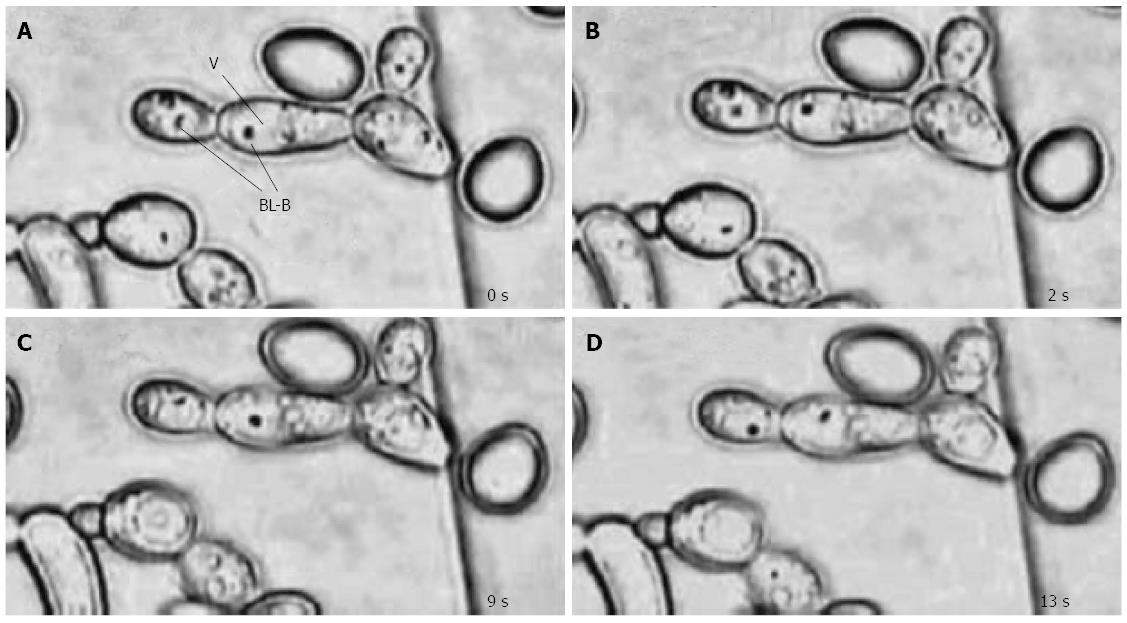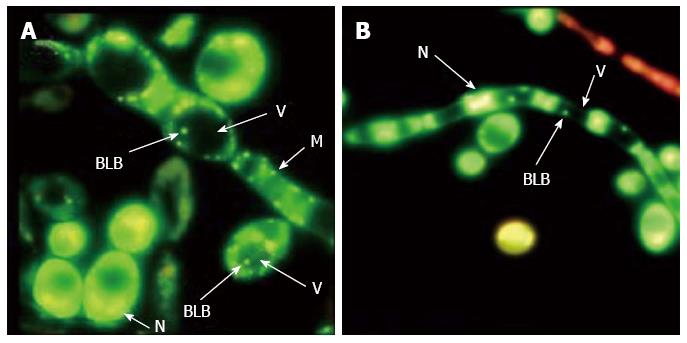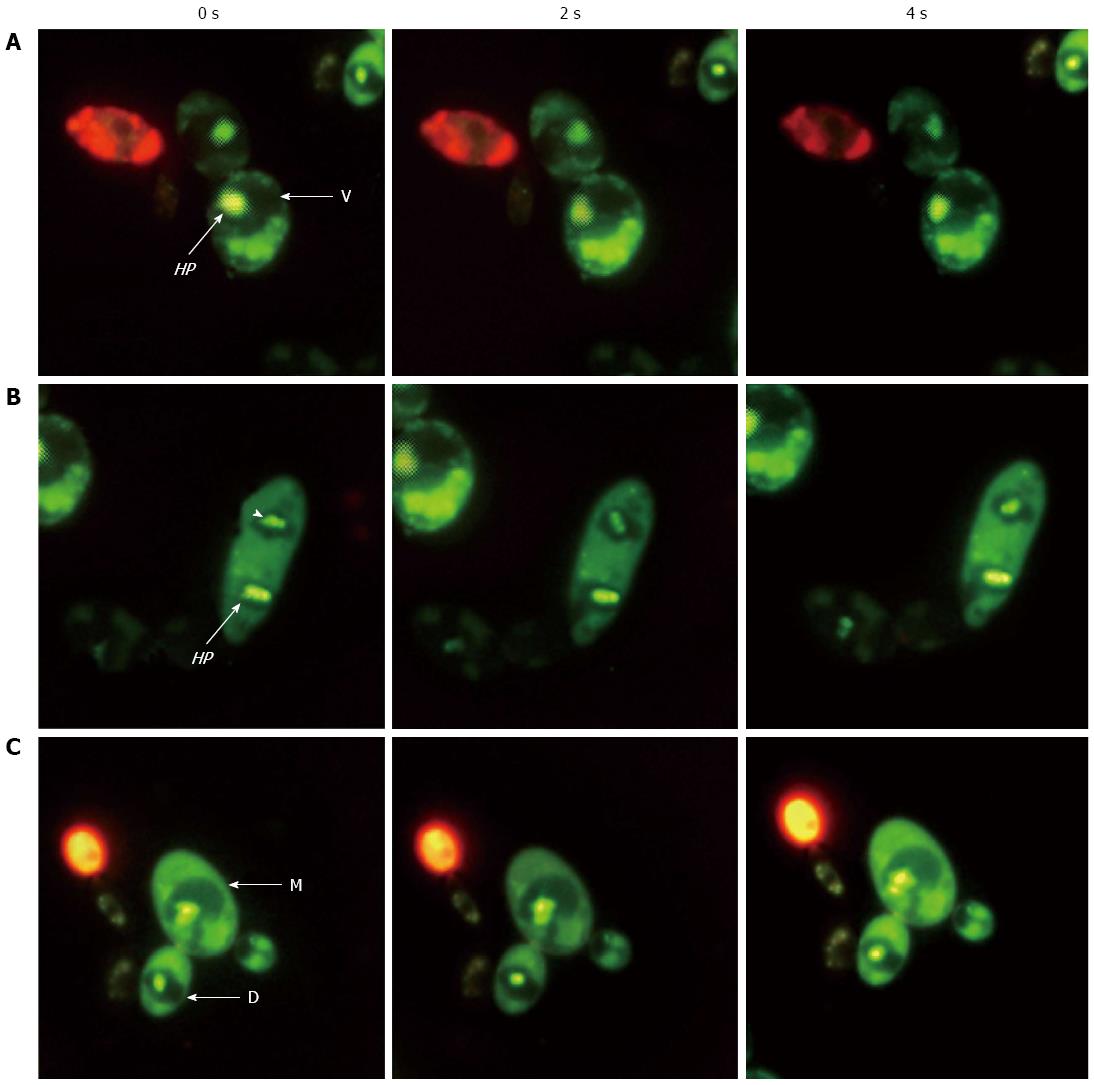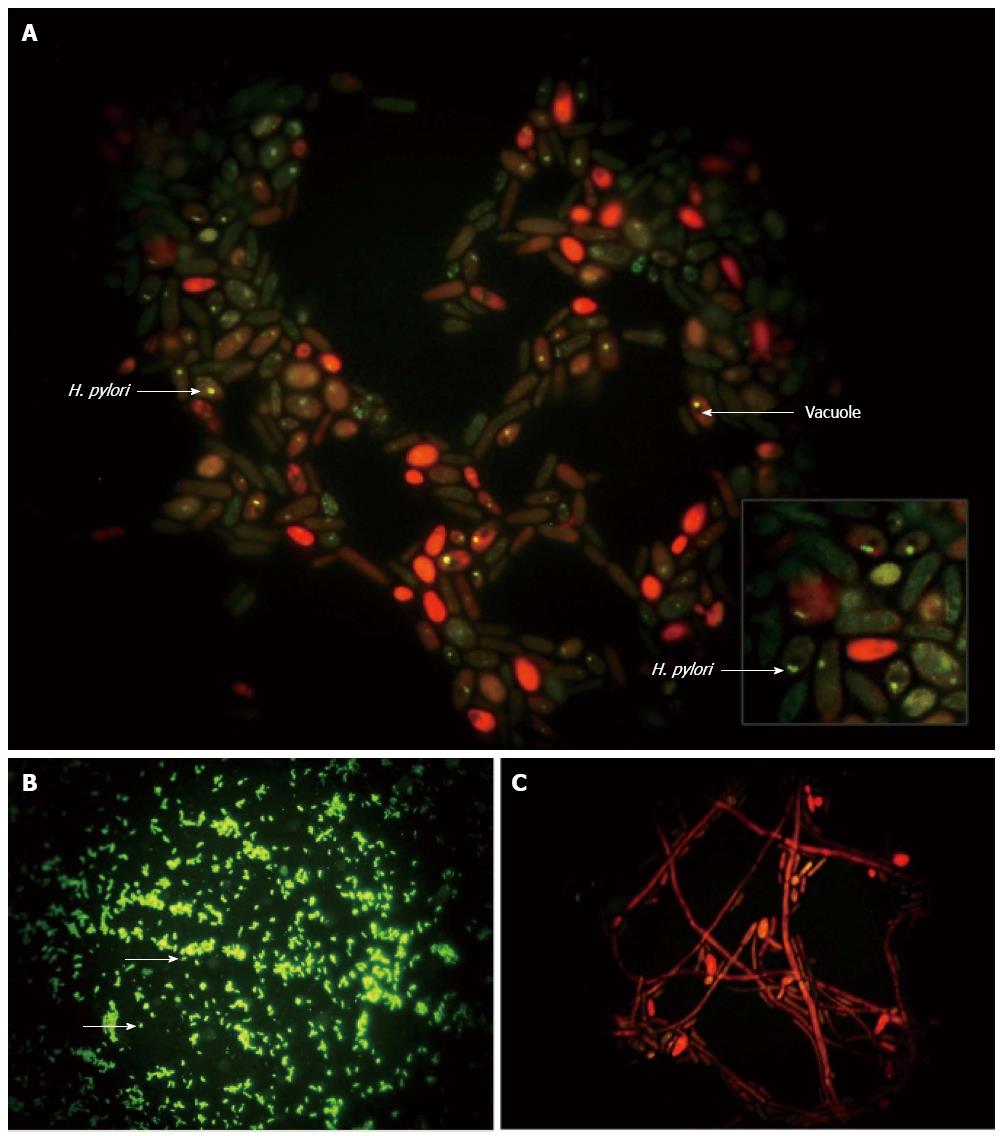Copyright
©2014 Baishideng Publishing Group Co.
World J Gastroenterol. May 14, 2014; 20(18): 5263-5273
Published online May 14, 2014. doi: 10.3748/wjg.v20.i18.5263
Published online May 14, 2014. doi: 10.3748/wjg.v20.i18.5263
Figure 1 Bacterial movement within yeast vacuoles.
Light micrographs taken at four time intervals (A, B, C and D) show fast-moving bacterium-like bodies (BLB) inside the vacuoles (V) of Candida yeast cells (magnification × 1250)[64].
Figure 2 Visualization of bacterium within yeast vacuoles.
Fluorescence micrographs of Candida yeast stained by a live/dead-BacLight kit show live (green) bacterium-like bodies (BLB) inside the vacuoles (V) of (A) yeast cells and (B) hyphae (N: Nucleus; M: Mitochondrion) (magnification × 1000)[87].
Figure 3 Helicobacter pylori movement in dividing yeast.
Fluorescence micrographs from three experiments (A, B and C) using a live/dead-BacLight kit showing live (green) fast-moving Helicobacter pylori (HP) cells (arrows and arrowhead) inside the vacuoles (V) of mother (M) and daughter (D) Candida cells taken at 0, 2 and 4 s (magnification × 1000)[108].
Figure 4 Immunolabeling of Helicobacter pylori.
Immunofluorescence micrographs showing: A: Localization of Helicobacter pylori (H. pylori) (green) inside the Candida yeast, some of which appear red due to diffusion of the counterstain (magnification × 4000); B: Control H. pylori (green; arrows) (magnification × 1000); and C: Absence of bacteria in heat-killed yeast (magnification × 1000)[108].
-
Citation: Siavoshi F, Saniee P. Vacuoles of
Candida yeast as a specialized niche forHelicobacter pylori . World J Gastroenterol 2014; 20(18): 5263-5273 - URL: https://www.wjgnet.com/1007-9327/full/v20/i18/5263.htm
- DOI: https://dx.doi.org/10.3748/wjg.v20.i18.5263












